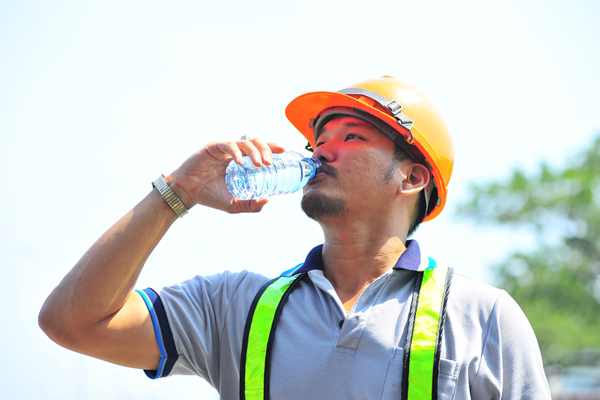What Are the Signs and Symptoms of Heat Exhaustion?
As the weather heats up, heat-related illnesses become a major safety concern for roofing contractors. Heat exhaustion, the most common of the serious heat-related illnesses, is when the body struggles to cool itself effectively. If left untreated, it can develop into a more serious condition of heatstroke.

You and your crew should learn the signs and symptoms of heat exhaustion to ensure anyone affected gets the proper care.
Signs and Symptoms of Heat Exhaustion
Some signs to watch out for in yourself and your workers include:
- Dizziness, headache or feeling faint.
- Rapid or weak pulse.
- Clammy and/or cool skin.
- Irritability or confusion.
- Thirst.
- Nausea or vomiting.
- Heavy sweating.
High temperatures and humidity, direct sun exposure or the lack of a breeze are obviously the biggest signs that heat exhaustion may be a concern. Occupational risk factors include:
- Heavy physical labor.
- Lack of acclimatization.
- Not drinking enough water.
- Wearing clothing that holds in body heat.
Best Practices for Preventing Heat Illness
Make sure your roofing business has a heat illness prevention program. At a minimum, this should outline what is needed for new, returning and temporary workers, such as how to help them acclimatize, or build up a tolerance to hot weather. It should also include a plan for handling medical emergencies.
Provide workers with water, rest and shade, and follow OSHA's heat prevention campaign:
- Ensure cool drinking water is available and easily accessible. The best practice is for workers to drink often (and before they are actually thirsty), about every 15 to 20 minutes.
- Take frequent breaks.
- Make sure fully shaded areas are available for resting, cooling and even working. The sun intensifies the heat, so have your crew work in the shade or take breaks under trees or a pop-up tent whenever possible.
Educate workers on the signs and symptoms of heat exhaustion and other heat-related illnesses. Train them on prevention methods and what to do when it happens. One option is to use a buddy system, where each worker has a partner who can monitor them for signs of a problem and remind them to stay hydrated.
Plan for emergencies; they will happen even with the best prevention, so you and your crew need to know how to handle them. Ensure you have someone at the jobsite responsible for monitoring the heat index and heat hazards, who is trained to recognize heat-illness signs and call emergency medical services.
Tips for Keeping Workers Safe, Hydrated and Protected
The most important way to fight heat exhaustion is to stay hydrated. Ask every worker to carry a water bottle or wear a hydration backpack to ensure they have water handy.
- Avoid ice-cold drinks; cool water is absorbed faster.
- Limit the intake of caffeine. Caffeinated soft drinks have a diuretic effect and can dehydrate you.
- Take light meal and/or snack breaks. The food contains water and helps replace lost fluids.
- Store a towel or cloth in a cooler that can be used to cool down the head and neck.
Wear lightweight, light-colored and loose-fitting clothes. Lightweight, loose clothing allows sweat to evaporate, and light colors reflect the sun's heat.
Know your work surfaces and materials. For instance, metal flashing can get hot during the summer, so keep it out of direct sunlight until you are ready to install it. Work with the sun's pattern. When the job permits, start on the west side of the roof at the beginning of the day, then work on the east side in the afternoon. This can reduce time spent in the direct sun.
Plan start, end and break times: Start the day as early as possible to avoid the midday sun, and finish before the hottest part of the day. Avoid excessive sun exposure, stay covered up and use sunscreen.
Think water, rest and shade: Make sure everyone knows the signs and symptoms of heat exhaustion, and what they should do if the sun starts to take a toll on their health.